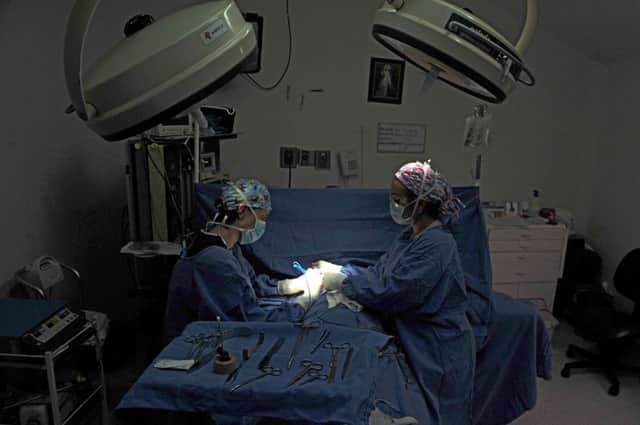‘Witchcraft’ cosmetic surgery warning


A meeting of surgeons in Edinburgh this week will hear about the potential uses of fat grafting in cosmetic procedures, as well as for reconstructive treatments, where fat is taken from the stomach or buttocks to correct or enhance another area.
Nigel Mercer, vice president of British Association of Plastic, Reconstructive and Aesthetic Surgeons (BAPRAS), said fat grafting was a “big unknown quantity” and surgeons wanted to be sure of its safety, for example whether it could increase the risk of cancer.
Advertisement
Hide AdAdvertisement
Hide AdOther potential complications could include changes in the appearance of the fat, which could lead to further surgery having to take place.
The European Society of Plastic, Reconstructive and Aesthetic Surgery congress started yesterday at the Edinburgh International Conference Centre, with experts attending from around the world.
Mr Mercer said fat grafting would be discussed extensively as an area which seemed to be growing in popularity, as more private clinics were offering the service in combination with liposuction.
Some women prefer fat transfer to traditional silicone implants due to concerns about their safety, but the procedure is only suitable for those wanting a small increase in breast size.
Mr Mercer said the procedure was used in the NHS in reconstructive surgery, but a bigger concern was in the private sector where follow-up checks on cosmetic patients were less likely to take place.
He said: “It is like the alchemy of old. You are taking fat and turning it into a reconstructive phenomenon. There is still a lot of witchcraft about fat grafting, and a lot that’s not known.
“For example, fat grafting in the breast after both breast cancer and for cosmetic augmentation would be an incredible way forward but you’re taking stem cells in the fat from the abdomen or the buttock and putting stem cells into an organ which we know is already at a one in nine risk of developing cancer.”
Mr Mercer said it was important with any new procedure to make sure it is properly tested.
Advertisement
Hide AdAdvertisement
Hide AdHe said: “It is not going to take very long to do that but it is essential that people know what the science is and we don’t hoodwink the public for the sake of marketing and making money.”
Mr Mercer said changes in the appearance of the fat over time were a potential concern. There are cases of people with fat grafting in their face having to have lumps of fat removed.
He added: “One of the biggest problems is that the fat stays as tummy or buttock fat. It doesn’t turn to facial fat. So if a patient’s weight changes over their lifetime they end up with buttock fat or tummy fat which has big fat globules in their face which can look terrible.”
Mr Mercer said patients wanting fat transfer for breast enhancement may also be unwilling to pay more or take the time to have follow-up checks.